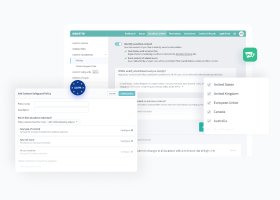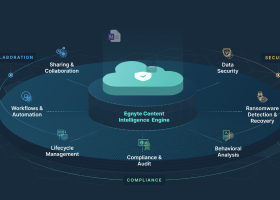Data Reporting
What Is Data Reporting?
Data reporting is the basic analysis and explanation of data that’s collected to answer a posed question. A data report includes details about the data that was collected and the results of the analysis. It can be a brief overview document or a highly complex report. In business, data reporting is most often used to assess business performance and other success metrics.

Data reporting is typically performed using spreadsheet and document applications (e.g., Microsoft Excel and Word). For example, data might be collected in a spreadsheet, with data reporting provided in a text document. Visual representations, such as charts, graphs, and tables, are commonly used in data reporting to illustrate results.
Data Reporting: How To
Prepare for data reporting by:
- Identifying the audience
- Gathering the data for the report
- Analyzing the data and identifying the results
- Organizing the data in spreadsheets—include all data (even data that was not analyzed and secondary data—but keep this data separate from primary data)
- Determining the best way to demonstrate results—usually a combination of text and charts
What to include in a data reporting document:
- Develop an introductory section:
- Summary of the purpose of the report and the data being analyzed
- Explanation of drivers (questions) behind the report
- Synopsis of questions posed and the conclusions that were drawn
- Table of contents or outline of what is presented in the report
- Create body sections for the report:
- Data—describe most important data and include copies of spreadsheets
- Methods
- Analysis
- Results
- Write a conclusion:
- Restatement of the drivers (questions) behind the report
- Highlights from results
- Recommendations for next steps
- Include an Appendix section:
- Data collected for the report
- Any secondary data that may have been included, including notes about its source(s)
10 Steps for Setting Up a Data Reporting Dashboard
- 1. Understand the requirements.
- 2. Collect and organize the data.
- 3. Evaluate the data backgrounds by different dimensions.
- 4. Determine the best way to display the data.
- 5. Share initial visualizations with key stakeholders.
- 6. Address stakeholder feedback.
- 7. Build the reporting dashboard according to established style guidelines.
- 8. Test the dashboard’s user experience, including reporting automation.
- 9. Establish processes for regular evaluation and updating of the data reporting system.
- 10. Document reporting and evaluation / update processes.
Why Data Reporting is Important
Data reporting is a tool that can be used to validate or disprove ideas with accurate, actionable information that can make connections between disparate metrics. Questions can be answered to support decisions and measure key performance indices (KPIs).
Data reporting also provides the crucial foundation for data analytics. The many deliverables provided by data reporting include:
- Providing information that supports data-driven decision making
- Delivering the underlying data to support actions and explain decisions
- Collecting and presenting data in a format that is suitable for analytics
Data Reporting Skills
Data reporting requires skills to transform data into consumable, usable, and actionable information.
Data reporting skills include the demonstrated ability to perform a number of tasks, including:
- Building dashboards to visualize results.
- Collecting and analyzing information from primary and secondary data sources for various types of reports.
- Creating and maintaining databases using data collection and analytics techniques to filter and clean data.
- Generating recurring or one-time reports.
- Identifying and interpreting patterns and useful trends in data.
- Interpreting data using statistical techniques to create regular reports.
- Locating and fixing errors in reports.
- Maintaining databases, spreadsheets, documents, and other tools used in data reporting.
- Reviewing systems and reports and correcting any backend code problems.
- Training others on how to use and create reports.
- Using data to make recommendations on how to prioritize business goals.
Additional data reporting skills and capabilities include:
- Ability to focus on details
- Ability to use SQL and Microsoft Excel to create pivot tables, graphs, and charts
- Analytical thinking
- Computer skills
- Critical thinking skills
- Mathematics
- Organization skills
- Strong written and verbal communication skills
- Team collaboration
Data Reporting Best Practices
The core of all data reporting best practices is paying close attention to the raw data. For the best data reporting results, start with data that is:
- Collected in real-time (if possible)
- Reviewed for accuracy
- Selected from stable and reliable sources
- Shared across applications (versus locked in silos)
Other data reporting best practices include:
- Create web-based reports to make results more accessible to end-users
- Eliminate the distraction of extraneous data by extracting the information that’s needed for analytics
- Ensure that access controls, with role-based security, authentication, and authorization, are used to protect sensitive data—in some cases, it may make sense to block portions of a spreadsheet from users’ viewing capabilities
- Explain how core indicators are measured, such as:
- Time—e.g., Annually, quarterly, monthly, daily, hourly
- Comparison—e.g., annual gross profit, gross profit of each department
- Unit of measurement—e.g., thousand or million; dollars or euros
- Prepare reports and data in a manner that is intuitive for the analytics team
- Select visualizations that fit with the results of data analysis, such as:
- Bar chart for a change in volume
- Clustered bar chart to compare the same indices for different areas
- Line chart to illustrate a trend
Data Reporting vs. Data Analysis
Data reporting and data analysis work together to provide the information needed to make and support decisions.
| Data Reporting | Data Analysis |
| Raises questions | Provides answers |
| Repeatable access to information | One-off data investigation |
| Organizes data | Uses data to mine for insights |
| Visualizes data | Interprets data |
| Turns data into information | Turns information into insights |
| Measures performance | Explores performance |
Data Reporting Tools
The tools used for data reporting are software applications that provide reporting, decision making, and business intelligence capabilities. These tools support the extraction and visualization of data.
Five Considerations When Selecting Data Reporting Tools
- 1. Data sources that are supported
- 2. Ease of use as related to reporting design
- 3. Options for export and printing formats
- 4. Report and rich visual effects capabilities
- 5. Support for mobile devices
Key Features of Top Data Reporting Tools
- A variety of professionally designed reporting templates and chart types are built into the solution
- Dashboards and reports that can be easily customized
- Data integration capabilities that include centralizing information from multiple sources
- Ability to add notes for users’ context
- Reports that are easy to share
- Intuitive and straightforward user experience
Data Reporting Examples
Examples of data reporting for businesses include:
Business Snapshot
- Monthly revenue
- New contacts
- New customers
- Website traffic
Customer Success
- Churn rates
- Customer and MRR (Monthly Recurring Revenue) retention
- Customer satisfaction metrics (e.g., Net Promoter Score (NPS), Customer Satisfaction Score (CSAT))
- MMR growth (upsell)
- Reference accounts
Marketing Reporting Metrics
- Campaigns that result in conversions to customers with the highest-value leads
- Channels that drive leads
- Customer Acquisition Cost (CAC)
- Lifetime Value to CAC
- Number of qualified leads
Sales Status
- CAC
- Conversions (from demo > trial > purchase)
- Forecasting
- Leads in the pipeline and what stage they are in
- New business MMR
Website Performance
- Bounce rate
- Pageviews
- Views per source (e.g., direct traffic, organic traffic, social media)
- Time spent on page
The Power of Data Reporting
Data reporting allows organizations to transform raw data into information that can be used to inform and support effective decision making. Develop and follow proven processes, use accurate raw data, and leverage software applications to make data reporting powerful.
Egnyte has experts ready to answer your questions. For more than a decade, Egnyte has helped more than 16,000 customers with millions of customers worldwide.
Last Updated: 6th November, 2021




